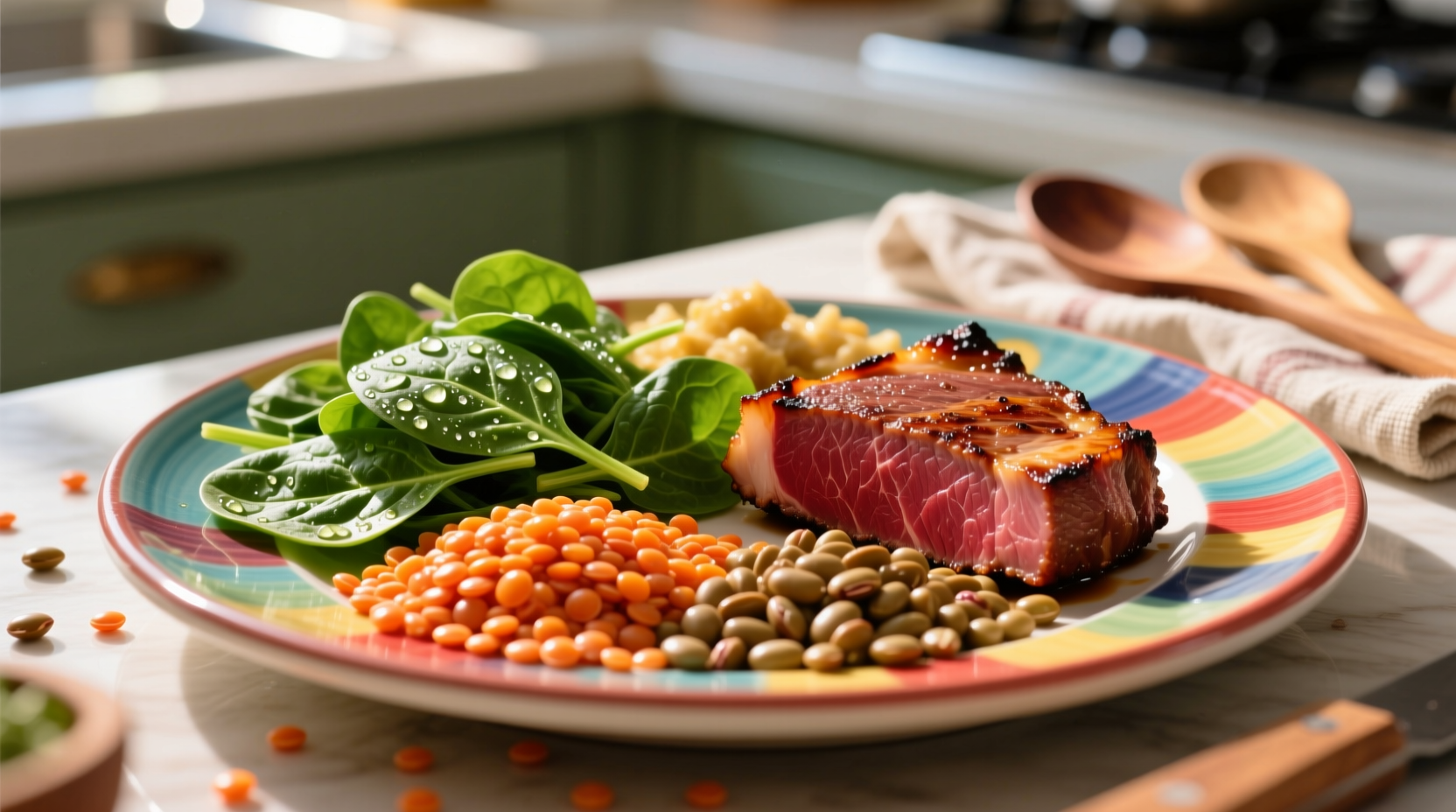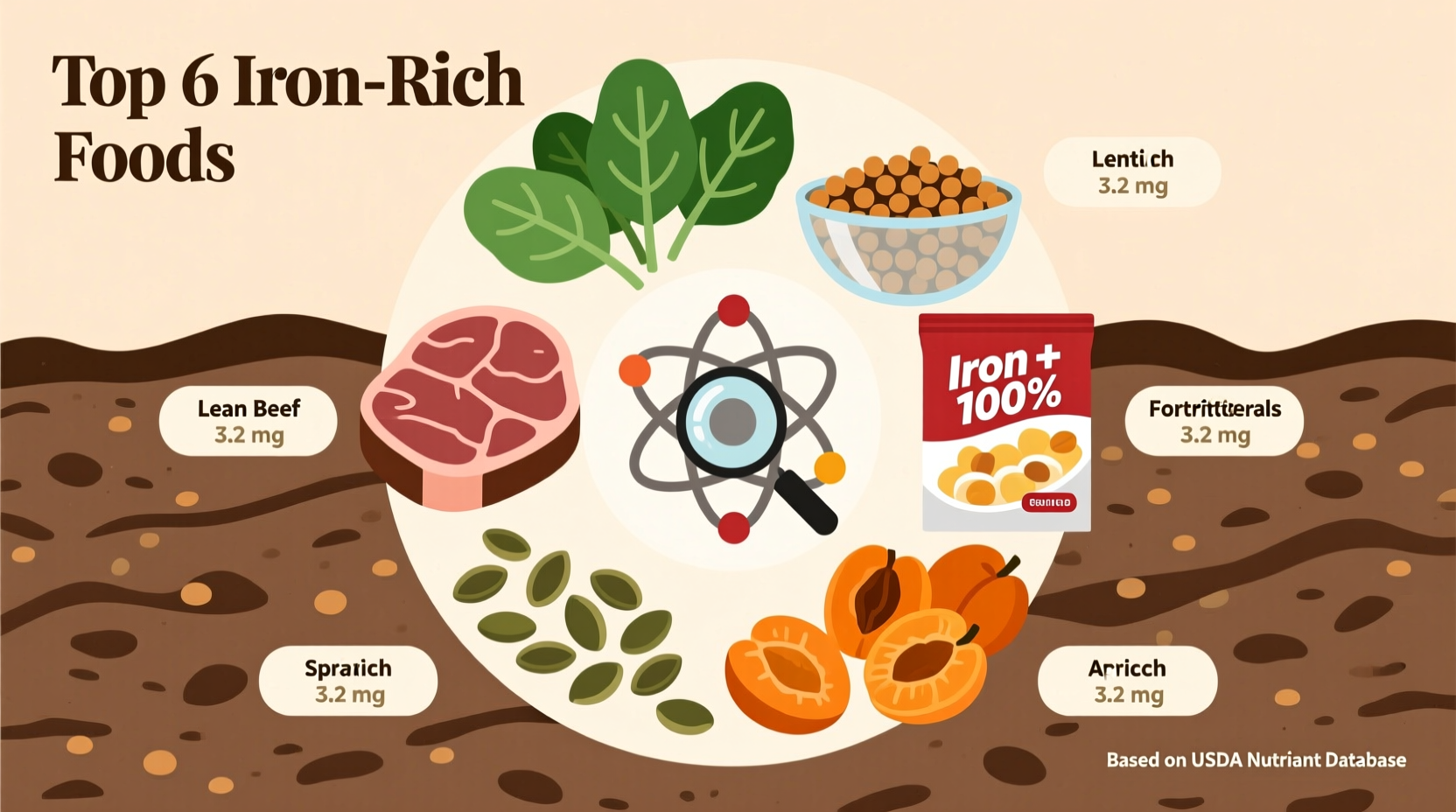Iron deficiency remains the most common nutritional deficiency worldwide, affecting approximately 25% of the global population according to the World Health Organization. Whether you're vegetarian, pregnant, or simply looking to optimize your nutrition, knowing which foods deliver the highest iron content per serving is essential for maintaining healthy blood levels and preventing fatigue.
Understanding Heme vs Non-Heme Iron Sources
Not all iron is created equal. The human body absorbs iron differently based on its source:
| Iron Type | Sources | Absorption Rate | Key Enhancement Factors |
|---|---|---|---|
| Heme Iron | Red meat, poultry, fish, shellfish | 15-35% | Naturally high bioavailability |
| Non-Heme Iron | Legumes, spinach, fortified cereals, nuts | 2-20% | Vitamin C, meat/fish/poultry |
This critical distinction explains why vegetarians and vegans often require nearly twice the recommended daily iron intake compared to meat-eaters. The National Institutes of Health reports that heme iron accounts for about 10% of total iron intake in mixed diets but contributes 40% or more of total absorbed iron.
Top Iron-Rich Foods by Category
Animal-Based Iron Powerhouses
For maximum iron absorption, animal-based sources deliver the most bioavailable form. A 3.5-ounce (100g) serving of beef liver provides a staggering 6.5mg of iron—36% of your daily needs. Other excellent options include:
- Oysters: 3.5 ounces contain 7.8mg iron (43% DV)
- Beef (grass-fed chuck roast): 3 ounces provide 3.1mg iron (17% DV)
- Sardines (canned in oil): 3 ounces deliver 2.4mg iron (13% DV)
- Chicken (dark meat): 3.5 ounces contain 1.3mg iron (7% DV)
Research from the American Journal of Clinical Nutrition confirms that regular consumption of red meat significantly improves iron status in women with low iron stores.
Plant-Based Iron Sources for Vegetarians
While plant-based iron has lower absorption rates, strategic food combinations can dramatically improve uptake. The USDA FoodData Central database identifies these as top plant-based options:
- Lentils: 1 cup cooked provides 6.6mg iron (37% DV)
- Spinach (cooked): 1 cup delivers 6.4mg iron (36% DV)
- Chickpeas: 1 cup cooked contains 4.7mg iron (26% DV)
- Pumpkin seeds: 1 ounce offers 2.5mg iron (14% DV)
- Quinoa: 1 cup cooked provides 2.8mg iron (16% DV)

Fortified Foods and Supplements
Fortified breakfast cereals often contain 100% of the daily value for iron per serving. A study published in the American Journal of Clinical Nutrition demonstrated that iron-fortified foods significantly improved iron status in at-risk populations when consumed regularly. However, always consult with a healthcare provider before starting iron supplements, as excessive iron can cause health complications.
Maximizing Iron Absorption: Practical Strategies
Simply eating iron-rich foods isn't enough—you need to optimize absorption. Here's what the research shows works best:
- Pair plant-based iron with vitamin C: Adding bell peppers to lentil soup or citrus dressing to spinach salad can increase non-heme iron absorption by up to 400%
- Avoid coffee and tea with meals: These contain polyphenols that can inhibit iron absorption by 50-90% when consumed simultaneously
- Cook in cast iron: Acidic foods like tomato sauce cooked in cast iron pans can increase iron content by up to 1,300%
- Combine plant and animal sources: Adding just 2 ounces of meat to a plant-based meal can triple non-heme iron absorption
Special Considerations for Different Needs
Iron requirements vary significantly across different demographics. The Harvard T.H. Chan School of Public Health outlines these key considerations:
- Pregnant women need nearly double the iron (27mg daily) to support increased blood volume and fetal development
- Vegetarians and vegans should aim for 1.8 times the standard recommendation due to lower absorption rates of plant-based iron
- Athletes may require additional iron due to increased red blood cell production and potential iron loss through sweat
- Menstruating women need 18mg daily compared to 8mg for postmenopausal women and men
Be aware that certain medical conditions like celiac disease or inflammatory bowel disease can significantly impair iron absorption regardless of dietary intake. If you suspect iron deficiency, consult a healthcare provider for proper testing before making significant dietary changes.
Recognizing Iron Deficiency Symptoms
Early signs of iron deficiency include fatigue, weakness, pale skin, and difficulty maintaining body temperature. As deficiency progresses, symptoms may include brittle nails, restless legs syndrome, and pica (craving non-food items like ice or dirt). The Centers for Disease Control and Prevention reports that iron deficiency affects approximately 10 million Americans, with 5 million experiencing full anemia.
Frequently Asked Questions
Which fruit is highest in iron?
Dried apricots and prunes contain the highest iron content among fruits, with approximately 0.7mg per 100g serving. While fruits generally aren't top iron sources, pairing them with vitamin C-rich options like oranges can enhance iron absorption from other plant-based foods in your meal.
How can I get 15mg of iron a day naturally?
To reach 15mg of iron daily through food: Start with fortified cereal (18mg) for breakfast, add spinach (3mg) to your lunch salad, include lentils (6.6mg) in dinner, and snack on pumpkin seeds (2.5mg). Pair plant-based sources with vitamin C-rich foods to maximize absorption. Menstruating women need this amount, while men and postmenopausal women require only 8mg daily.
Does peanut butter have iron?
Yes, peanut butter contains iron—approximately 0.6mg per 2-tablespoon serving. While not among the highest sources, it contributes to daily intake, especially when paired with whole grain bread (which provides additional iron) and vitamin C-rich foods like orange slices to enhance absorption.
What drinks are high in iron?
Most beverages contain minimal iron, but prune juice offers about 3mg per cup. Iron-fortified plant milks (like some soy and oat varieties) provide 1-2mg per serving. For maximum benefit, consume iron-rich drinks alongside vitamin C sources and avoid pairing with coffee or tea, which inhibit absorption.
How long does it take to increase iron levels through diet?
With consistent consumption of iron-rich foods and absorption enhancers, you may see improvements in iron stores within 2-3 weeks, though full recovery from deficiency typically takes 3-6 months. The National Institutes of Health notes that dietary changes alone may not be sufficient for severe deficiency, where medical intervention might be necessary.











 浙公网安备
33010002000092号
浙公网安备
33010002000092号 浙B2-20120091-4
浙B2-20120091-4